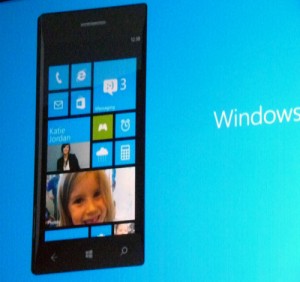Seeking to drive greater compatibility between smartphones and PCs, Microsoft is planning to base its upcoming Windows Phone 8 OS on the same OS core as its Windows 8 software for desktop and laptop computers, the company said Wednesday.
 The move marks a major change for Microsoft, which used the Windows CE core as the basis for its current Windows Phone 7 OS.
The move marks a major change for Microsoft, which used the Windows CE core as the basis for its current Windows Phone 7 OS.
“As phones get more powerful, we have been feeling more and more that phones could benefit from an upgrade at the core,” said Joe Belfiore, corporate vice president of Microsoft, speaking at a developer presentation in San Francisco.
“For consumers, this new shared core is going to mean a much greater choice in hardware and some new experience that cross over between phone and PC,” said Belfiore.
Microsoft said the switch would mean several changes, including greater support for NFC (near field communications) wireless technology for mobile wallet applications and the ability to easily support ports of Windows games to Windows Phone 8.
The latter feature, Belfiore said, will mean, “we’re going to see some freaking killer games.”
For corporate IT managers, the new OS will include encryption and secure boot-up, the ability to roll out applications to phones without having to go through Microsoft, device management applications and support for Microsoft Office applications.
Windows Phone 8 will also mean the adoption of Nokia Maps as the default mapping client. In some countries this will include turn-by-turn navigation. Microsoft and Nokia reached a broad phone development deal in 2011 that would put Windows Phone on Nokia devices and make Nokia’s mapping software a key part of the OS.
Other features announced Wednesday include two new screen resolutions: 1280 by 720 and 1280 by 768 pixels.
A major cosmetic change to the OS will be a refresh of the home screen. The current screen includes a number of customizable tiles that can be one or two columns wide. The new home screen will feature up to four columns of tiles, giving users a chance to put more applications and information on the home screen.
Wednesday’s announcement was targeted at the developers Microsoft needs to get on board to make the new OS a success. As such, the company didn’t announce end-user hardware devices.





